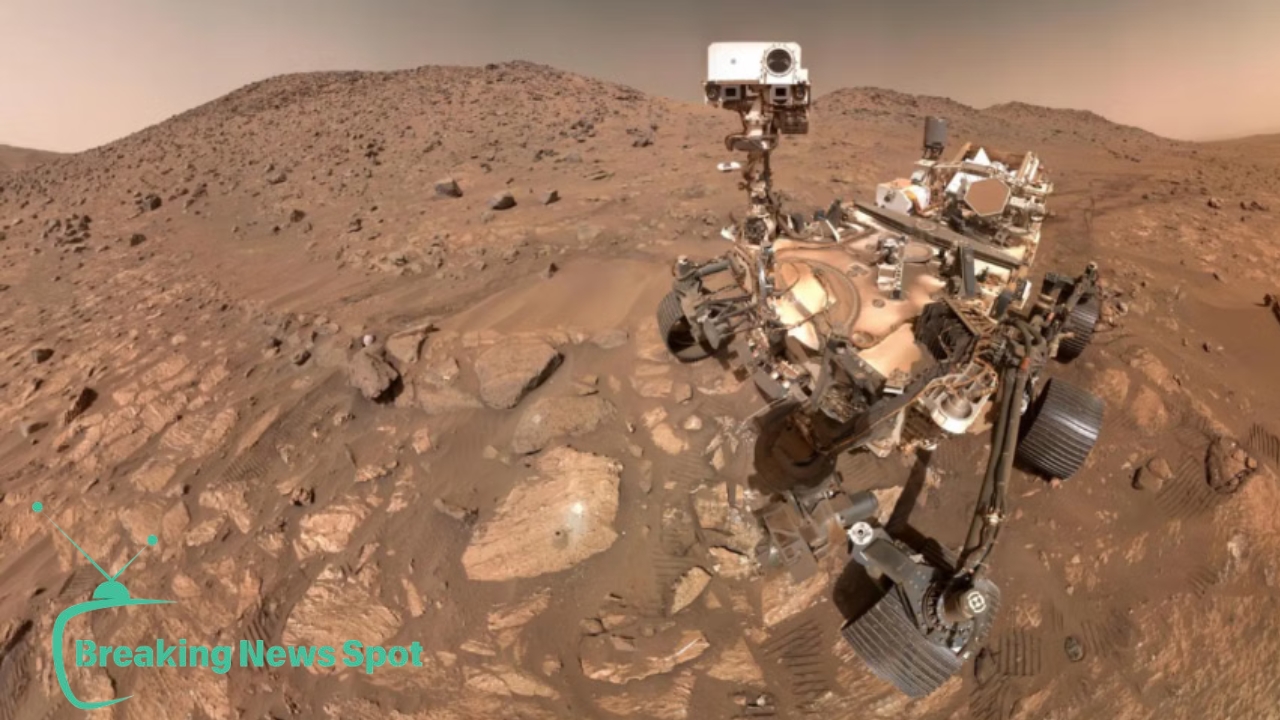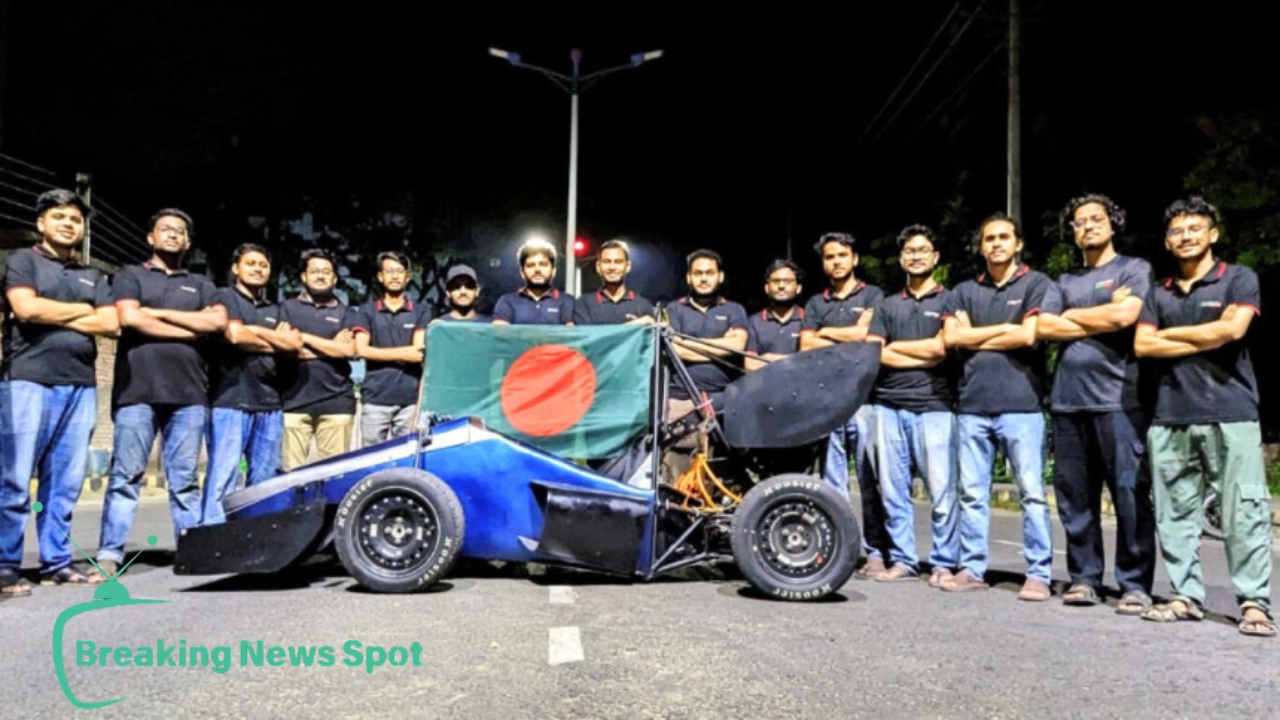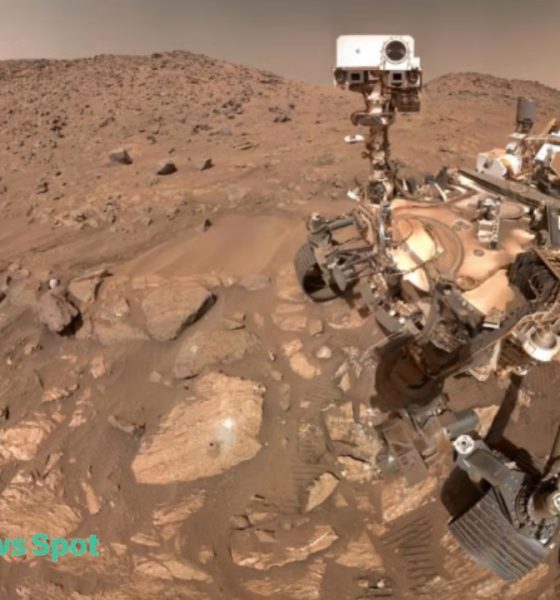Tech
The first alien planet found by the Webb telescope

Since its launch in 2021, the James Webb Space Telescope has not only yielded a wealth of information about the early universe but also crucial information on a number of exoplanets—planets outside of our solar system that are already known to exist. Webb has now found an exoplanet that was previously unknown for the first time.
of 110 light-years from Earth, in the constellation Antlia, Webb has directly imaged a young gas giant planet of the size of Saturn, the second-largest planet in our solar system, orbiting a star smaller than the sun, according to researchers. Light travels 5.9 trillion miles (9.5 trillion km) in a year, which is known as a light-year.
The transit method, which involves observing the tiny dimming of a star’s light when a planet passes in front of it, has been used to find the majority of the about 5,900 exoplanets that have been found during the 1990s. As Webb did with the recently discovered planet, less than 2 percent of them have been directly observed.
Despite its size in relation to our solar system, this planet is really the least massive one ever found by direct imaging; it is ten times less massive than the previous record holder. This illustrates how sensitive Webb’s instruments are.
A French-made coronagraph—a device that filters out a star’s intense light—installed on Webb’s Mid-Infrared Instrument, or MIRI, allowed for this finding.
“Webb provides a new window of exoplanets that were previously inaccessible to measurements, both in terms of mass and a planet’s distance from the star. The study’s primary author, astronomer Anne-Marie Lagrange of the French research organization CNRS and LIRA/Observatoire de Paris, stated that this is crucial to investigate the variety of exoplanetary systems and comprehend their formation and evolution. The study was published in the journal Nature on Wednesday.
The distance between the planet and its host star, TWA 7, is roughly 52 times that of Earth’s orbit around the sun. Neptune, the furthest planet in our solar system, orbits around 30 times further from the sun than Earth, to put that into perspective. When finding exoplanets that orbit near their host star instead of far away like the recently discovered one, the transit method is especially helpful.
“For planets near their stars, indirect methods yield amazing information. To reliably identify and describe planets farther away—typically ten times the distance between Earth and the sun—imaging is required, according to Lagrange.
A massive cloud of gas and dust known as a molecular cloud forms the basis of a planetary system when it collapses under its own weight, creating a central star. Planets are made of leftover material that rotates around the star in a structure known as a protoplanetary disk.
In comparison to the sun and our solar system, which are approximately 4.5 billion years old, the star and planet in this study are essentially infants, being only 6 million years old.
The researchers were able to identify the structure of the remaining disk because of the angle at which this planetary system is being seen, which is effectively gazing at it from above rather than from the side. It consists of one narrow ring, which is where the planet is located, and two wide, concentric ring-like structures composed of stony and dusty debris.
The makeup of the planet’s atmosphere is still unknown to the astronomers, although it might be revealed by next Webb investigations. Furthermore, given how young the planet is, they are unsure if it is still growing mass by accumulating more material around it.
Despite being the tiniest planet ever directly seen, it is nevertheless far more massive than rocky worlds like Earth, which could be attractive targets for extrasolar life searches. Webb is still unable to directly picture exoplanets the size of Earth, despite its amazing ability to observe the universe in near-infrared and mid-infrared wavelengths.
“Looking forward, I do hope the projects of direct imaging of Earth-like planets and searches for possible signs of life will become a reality,” Lagrange stated.
Tech
Possible signs of ancient life on Mars are discovered by a NASA rover.

The Perseverance of NASA According to study that was published on September 10 in the scientific journal Nature, the Mars rover may have found signs of ancient microbial life on Mars.
NASA said the results are based on a rock sample that was taken in Jezero Crater, an old dry riverbed that used to supply water to the planet’s basin. ‘Cheyava Falls’ is the name of the rock that was sampled in 2024 when the rover studied a feature known as Bright Angel.
According to NASA, the sample, now known as “Sapphire Canyon,” included mineral patterns and chemical compounds that scientists believe could be potential biosignatures—features that may be connected to biological activity but need more research before any inferences about life can be made.
Within the sedimentary rocks, Perseverance’s sensors found organic carbon, sulfur, phosphorus, and oxidized iron—elements that potentially sustain microbial metabolisms on Earth.
Additionally, they discovered iron-rich minerals such as greigite (iron sulfide) and vivianite (hydrated iron phosphate), which are known to occur in conjunction with microbial activity or decomposing organic debris. However, the data is equivocal since these mineral fingerprints may also be created by non-biological events.
The finding, which contradicted previous theories that only older Martian formations may retain traces of life, was surprising since it originated from relatively fresh sedimentary rocks, according to experts. If verified, the finding would indicate that Mars was habitable later in its history than previously thought.
Since it began working at Jezero Crater in 2021, Perseverance has gathered 27 rock cores for analysis. In addition to continuing its research, NASA intends to utilize the rover to test materials for possible spacesuits and monitor environmental conditions in order to get ready for future human flights.
Tech
Gen Z selected Nepal’s new prime minister over Discord before the announcement was made.

Discord is a social networking service more commonly associated with online gaming, but last week hundreds of teenagers used it to support Nepal’s future leader, giving the nation’s political dilemma a new dimension.
Following weeks of turmoil, their candidate, former Nepalese Chief Justice Sushila Karki, was sworn in as Nepal’s first female prime minister on September 12 and led an interim administration.
After officials in the Himalayan state tried to limit social media use, Generation Z (those born approximately between 1997 and 2012) took the lead in the demonstrations, which were mostly against corruption.
Using internet platforms, protesters—many of whom were in their teens and twenties—organized marches, disseminated information, and ultimately cast ballots for possible candidates. As reported by India Today recently, the most well-known center was a Discord server dubbed ‘Youth Against Corruption’, which at its height had over 130,000 members.
In the last round on September 10, more than 7,713 ballots were cast, and Karki received a majority of more than 50% of the vote, according to a recent article from the South China Morning Post. Prior to her formal appointment on September 12, Karki met with General Ashok Raj Sigdel, the leader of Nepal’s army, and President Ram Chandra Poudel.
It’s unclear, though, if the Discord vote had a direct impact on Sushila Karki’s official appointment as Nepal’s prime minister.
Discord was first created in 2015 by Jason Citron and Stanislav Vishnevskiy as a way for gamers to interact while playing. Since then, a younger audience has been drawn to its straightforward interface and combination of text, audio, and video features, particularly during the pandemic when usage grew well beyond the realm of games.
Hundreds of thousands of people can join Discord servers, forming large online communities with news, debate, and coordination channels.
The platform turned as a vital organizing tool for the protests in Nepal. In addition to the leadership vote, volunteers established channels for fact-checking, emergency support, and logistics within the Youth Against Corruption site. With the use of this system, protesters were able to control information flows in real time while staying away from major social media sites that were prohibited, like Facebook, Instagram, X, LinkedIn, and others.
Tech
Bangladesh will be represented at Formula SAE Japan 2025 by the RUET team.

At one of the most prominent engineering design contests in the world, Formula SAE Japan 2025, where students construct and compete in formula-style electric vehicles, Team Crack Platoon from Rajshahi University of Engineering and Technology (RUET) is representing Bangladesh.
At Aichi Sky Expo, Formula SAE Japan 2025 got underway on September 8 and will run through September 13. Ninety teams were chosen this year from a large number of international applications; the only Bangladeshi team to make it was Team Crack Platoon from RUET. Since no other South Asian team has made it to the competition this year, they are also representing the area.
The Society of Automotive Engineers (SAE) organizes the competition every year, which is widely regarded as the “Olympics of Engineering Students” and challenges competitors to design, build, and test automobiles that adhere to exacting international standards. Teams are graded on many things, such as their design, cost analysis, business presentation, and how well they stay on track with their performance.
Team Crack Platoon will be racing with CP-Astrion, their third-generation electric race car. It has a lightweight composite frame, wings that are better at reducing drag, and a battery system backed by Tesla. As the team says, this car was built to meet the world safety and performance norms of Formula SAE.
“We’re excited to learn from the best and show that Bangladeshi students can compete on this global stage,” team captain Saadman Saqueeb stated in reference to the tournament. The tale of CP-Astrion, which was created with little funding but a great deal of enthusiasm and collaboration, is what sets us apart.
The group believes that by sharing their experience, other students will be inspired to investigate innovation. “We want our journey to demonstrate that Bangladesh can produce world-class engineering,” Saqueeb continued. We believe that if we can do it, anybody can, and we hope that this encourages creativity and experiential learning throughout South Asia.
There are 28 people in the entire Crack Platoon team, and they work in several departments like design, business operations, electrical, and mechanical. Team Captain Saadman Saqueeb, Electrical Head Sudipto Mondal, Mechanical Head Md Habibullah, Design Head Md Nayem, and Business Head Rafiul Haque Ayon are in charge of the sectors.
-

 Tech6 months ago
Tech6 months agoDo you frequently use ChatGPT? A study says that you’re lonely.
-

 Sports6 months ago
Sports6 months agoMessi comes back and scores in less than two minutes.
-

 Sports7 months ago
Sports7 months agoThey will make IPL a hit
-

 Entertainment7 months ago
Entertainment7 months agoDue to his mental health issues, David Kushner has cancelled his tour.
-

 Entertainment7 months ago
Entertainment7 months agoWhy did Juhi reject Salman?
-

 World7 months ago
World7 months agoIsrael continues its Gaza attack, killing a journalist and issuing evacuation orders.
-

 Fashion7 months ago
Fashion7 months agoBefore getting your ears pierced, here are some things to consider
-

 Tech7 months ago
Tech7 months agoXiaomi brings Redmi Note 14














